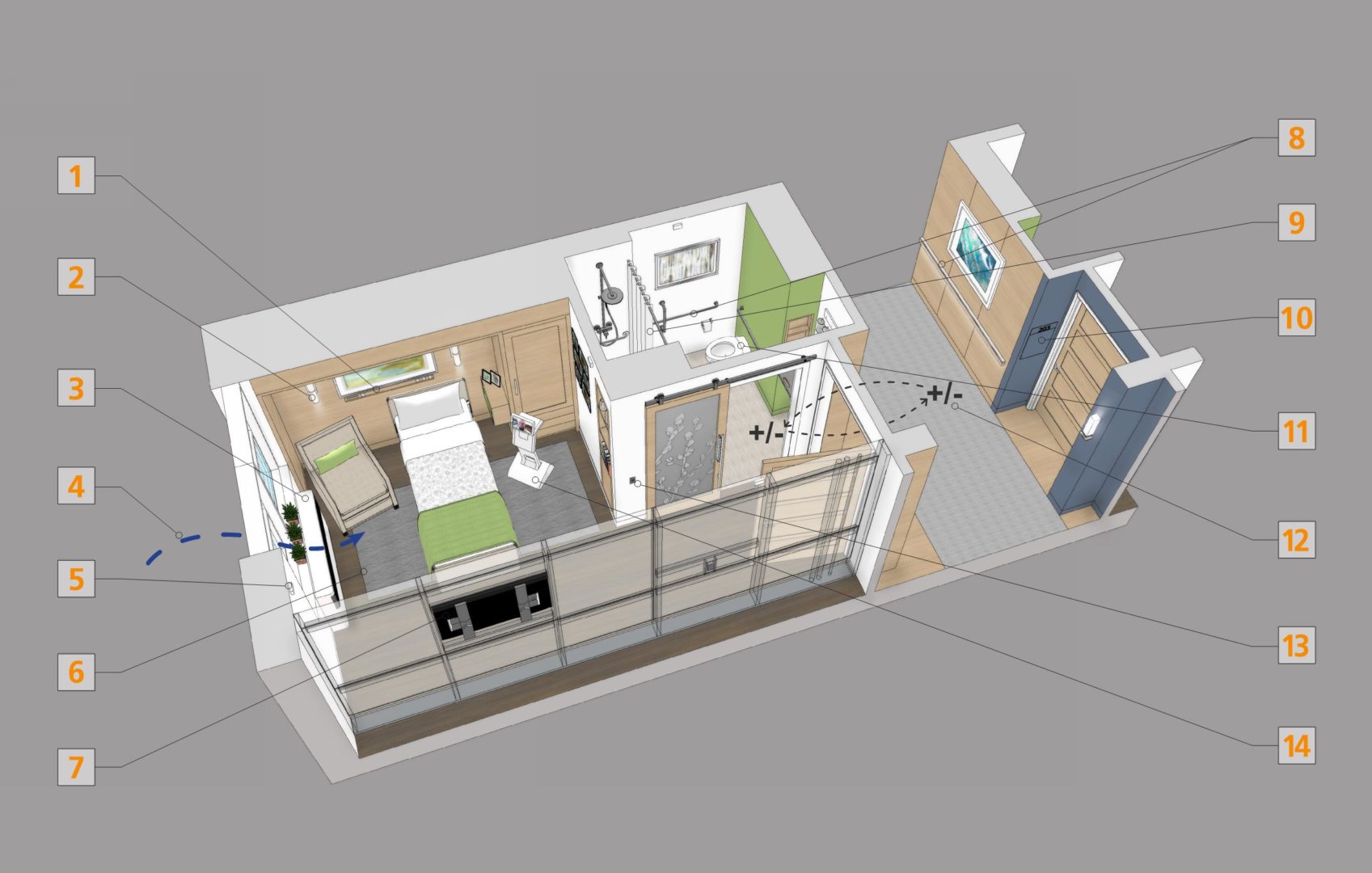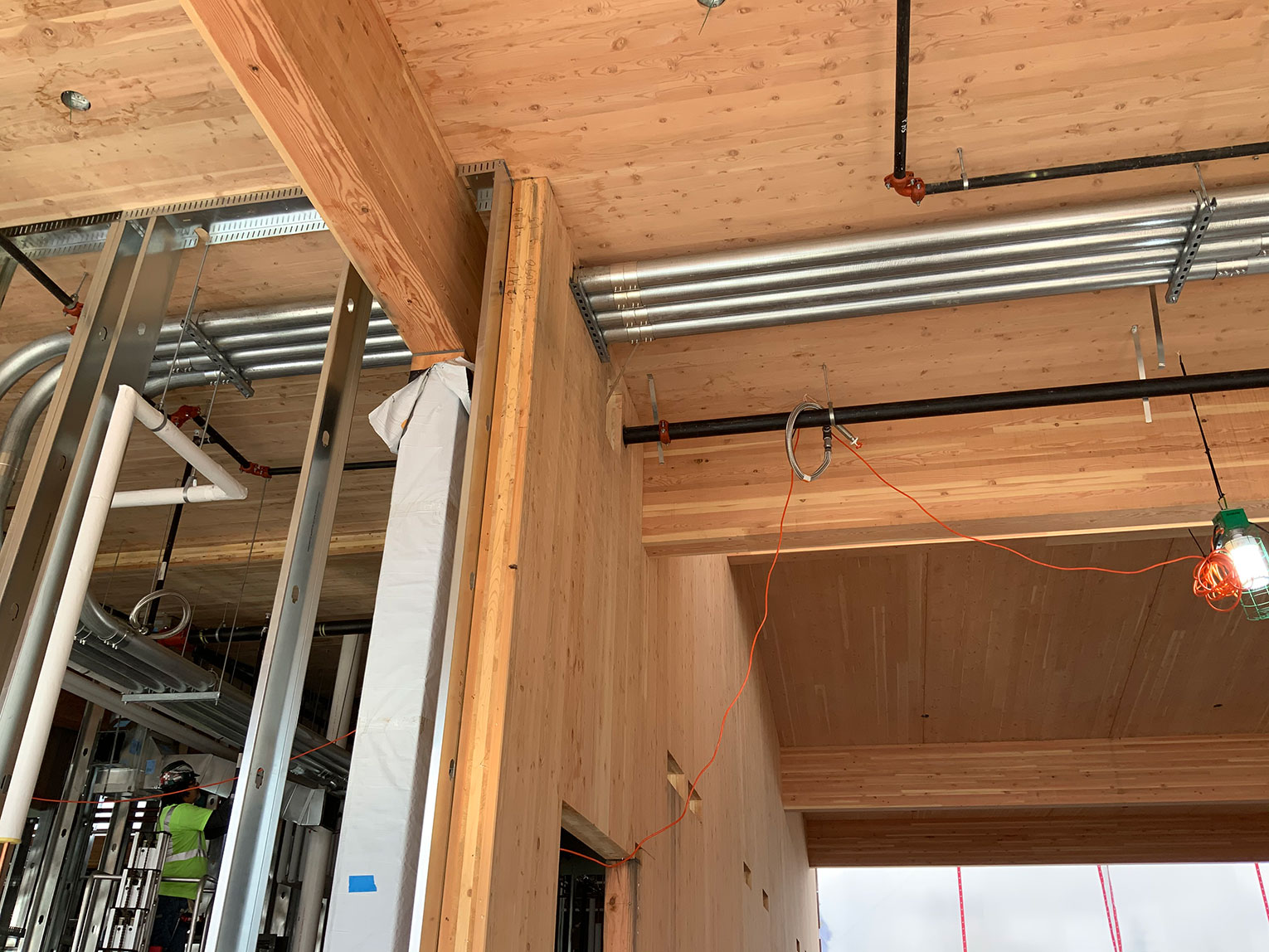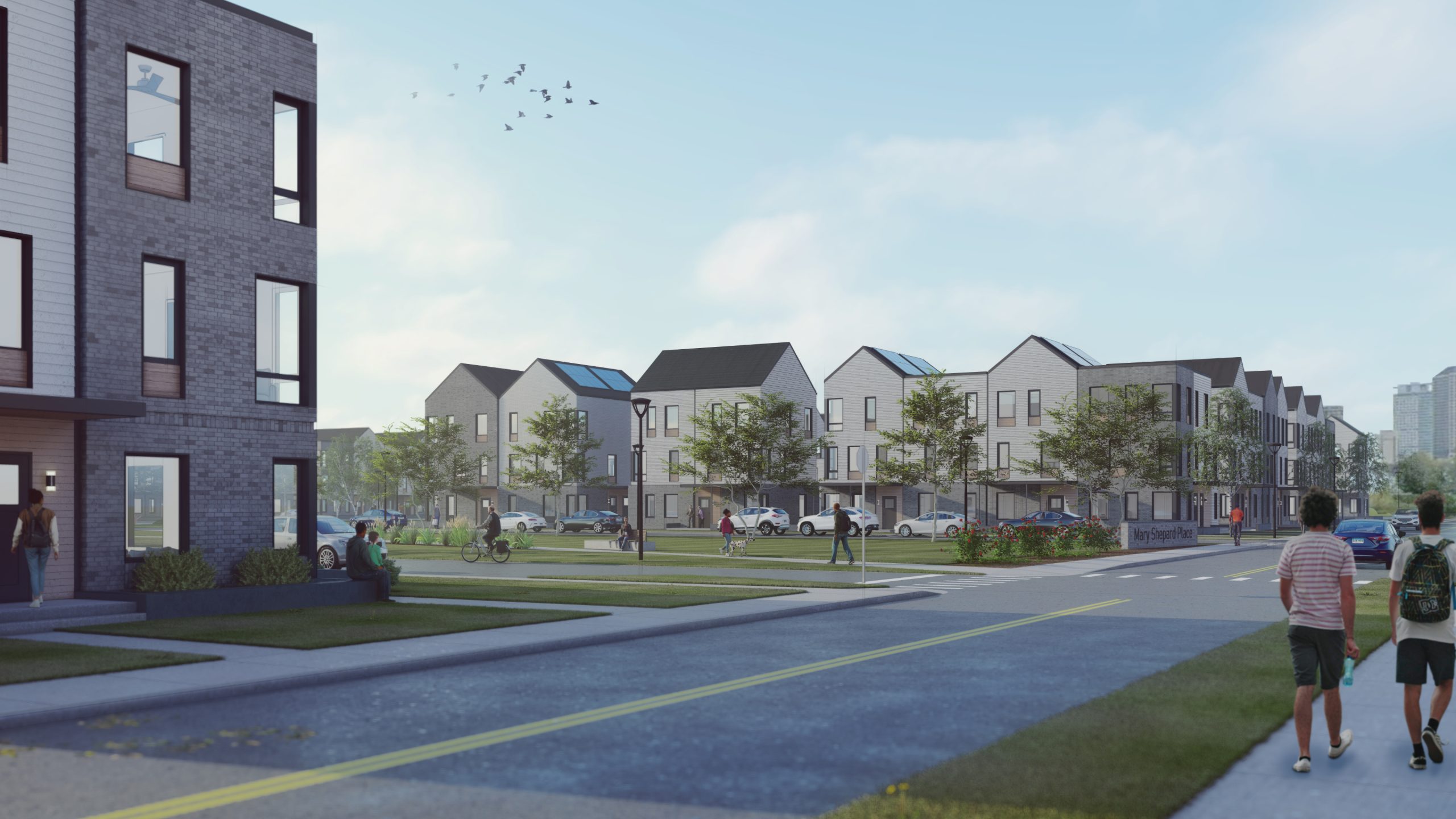Over the last several weeks of the COVID-19 Pandemic, our Senior Living Team has been using some of our down time to interview Administrators and CEOs in New York, Connecticut and Massachusetts who are in the midst of the crisis to get a real-time assessment of the issues that they are facing. What we have learned has been fascinating and informative. Our next step, as the crisis begins to wane, will be to reach back out to those same individuals, share what we have learned, and find out if their perspective has changed. Our other market design teams (Workplace, Higher Education, and Mixed-Use) are doing the same thing. A key difference with the Senior Living world is that there is no “back to work” time. They never left, and so the information we are gathering is, in many ways, ahead of the game, and more reflective of a new reality. A key difference with Senior Living environments is that there is no “back to work” time. Staff has remained on the front lines the whole time. There will be, however, a “reopening” for visitors and residents, and so the information we are gathering is, in many ways, ahead of the game, and will help us design for a new reality.
At the same time, our team has continued to work on the schematic design for a large nursing home renovation at Andrus on Hudson in New York, and we have been able to use what we have learned so far to enhance the design in a positive way (The New York Times recently took note of this). The resident room illustration below highlights those enhancements.

1. Headwall with Hidden Devices
A well-designed headwall can provide better resident care and hygiene while still maintaining a residential feel. Having medical gases, power, and nurse call at the ready in this convenient location can reduce bacterial transfer, tripping hazards, and time. Hiding the devices behind a moveable panel or piece of art keeps a familiar homelike warmth that is comforting.
2. Circadian Lighting
Circadian lighting that aids in regulating wake and sleep cycles during isolation will be essential in maintaining the health of residents.
3. Individualized HVAC
Individualized fresh air intake, heating, cooling and exhaust limit the transmission of airborne pathogens between spaces. These systems are often more first cost effective and allow for greater future flexibility.
4. Air and Light
The essential ideas behind wellness are as important as ever, with ample fresh air, sunlight, views, and connection to nature being a critical part of a healthy living environment.
5. Motion Sensor Technology
Discrete monitoring of movement or falls without compromising resident privacy can reduce unnecessary staff to patient visits, improve nighttime rest, and enhance the overall health and wellbeing of the resident.
6. Seamless Transitions
Subtle and carefully chosen changes in flooring colors and patterns offer a home-like feel that is comforting to the resident. It is equally important that flush transitions are detailed using smooth and easy-to-clean materials that will reduce surfaces where bacteria thrives.
7. Prefabricated Modular and Moveable Walls
Modular plug-and-play walls with integrated technology such as televisions, speakers, and cameras can help to facilitate telehealth for better care and video chats to improve social isolation. Monitors are fully concealed in walls behind smooth glass surfaces which allow for easier cleaning. These walls can also easily be disassembled and moved to offer flexibility which may include compartmentalizing a facility during a pandemic. If technology cannot be afforded as a first cost, it can be incorporated easily into walls later by removing and replacing panels without dust associated with standard construction.
8. Copper Coating
Copper is an effective antimicrobial and is one of few approved by the EPA. It can be costly, and should be used sparingly and in places where it counts such as grab bars and handrails in high trafficked areas.
9. Private Rooms with Bathing
While private resident rooms with private baths have long been a luxury that most nursing homes couldn’t afford, the current pandemic may make them a necessity. A fully accessible private bathroom offers a resident a much more dignified, familiar, safe, and healthy experience than the more typical common bathing room. Overall, this can contribute to an improved health and well-being for both the residents and staff of any nursing home.
10. Built-in PPE Supplies
Positioned at the entry alcove of a resident room, sleek recessed cabinets can disguise essential PPE, and make them conveniently accessible.
11. Touchless Controls
Motion and voice activated features on toilets, sinks, lighting and temperature controls can limit the transfer of harmful bacteria.
12. Adjustable Air Pressure
Changing the air pressure within rooms and common space will help contain diseases and protect vulnerable residents and staff.
13. Hands Free Doors
Touchless door operators will reduce bacteria transmission and increase mobility at the wave of a hand. They can also reduce the need for accessibility clearance at doors which can save precious space.
14. Robot Doctor
Video chat with a healthcare provider who can take vitals remotely, improves care by saving time and limiting potential transfer of infectious diseases.







